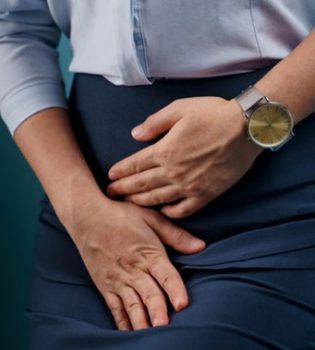What is an endometrial polyp
Intrauterine polyps are lesions that develop from the inner layer of the uterus (endometrium). Intrauterine polyps most often develop in the fundus region of the uterus. Estrogen hormone is thought to have an effect on the development of endometrial (intrauterine) polyps.
Polyp Pathology
It is characterized by glandular proliferation surrounding the central nucleus formed by prominent blood vessels in the stroma of endometrial polyps.
Uterine polyp
The frequency of intrauterine polyps has been shown to be 10-20% in the examinations performed in women with uterine biopsy and removal of the uterus. Endometrial polyp is less likely to occur in women under the age of 20. Polyps appear more frequently in the 40-50s. 60% of polyps appear in the premenopausal periods.
Symptoms of Polyps
Symptoms of polyps: Most of the polyps are asymptomatic. That is, most of them do not give any symptoms. The most common symptom in women with uterine polyps is irregular vaginal bleeding. In studies conducted in women with abnormal vaginal bleeding, polyps were found in 30% of them.

Do Polyps Cause Infertility?
Polyps are common lesions in reproductive age. They are common in the infertile population. Polyps can develop in different sizes, in different numbers and in different places in the uterus. Biological characteristics of polyps, pathological features of polyps and polyp forming factors may be responsible for the effects of polyps on reproduction. The polyp itself has negative effects on reproduction either by its direct effects or by the indirect effects of polyp-producing factors. Theoretically, polyps can contribute to the formation of pregnancy as a negative effect by;
-causing irregular intrauterine bleeding
-causing inflammatory endometrial response (similar to ria)
-possibility of obstructive defect in sperm passage
-creating a physical and endocrine (glycodelin molecule) barrier to the attachment of the embryo to the uterus
-negative microenvironmental effect on embryo attachment and development
Due to the effects listed above, intrauterine polyps can prevent pregnancy.

Polyp Diagnosis
The diagnosis of endometrial polyp can be made with a simple ultrasound examination. The following methods can be used for the diagnosis of polyp;
-SIS (Examination of uterus with serum)
The SIS method is a diagnostic method used in the diagnosis of polyps due to its high accuracy, safe, fast and minimally invasive effect.
-HSG (uterus film)
In the diagnosis of uterine polyp, polyps may appear in the form of filling defect in the uterus.
-Hysteroscopy
The diagnosis of polyp hysteroscopy is the most important tool in terms of both diagnosis and treatment. Polyps are detected by hysteroscopy and removed in the same session.
-MR
MRI is not a routinely used diagnostic tool in the diagnosis of polyps.
Polyp Treatment
Polyp treatment is the surgical removal of the polyp.
Polyp Surgery
Endometrial polyp treatment is performed by surgical removal of the polyp. The polyp can be removed by the following methods:
– Curettage(D&C)
-Hysteroscopic polyp resection
-Polyp removal with transvaginal ultrasound











